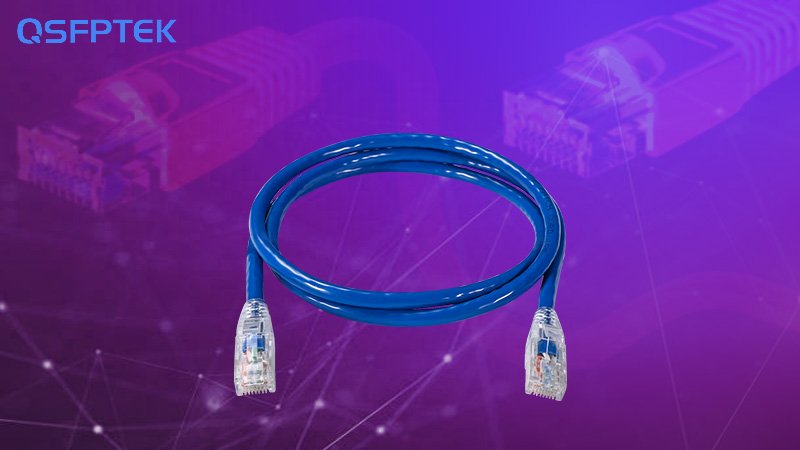The development of Ethernet cable standards has played a vital role in shaping the modern digital world. From the early days of 100 Mbps connections to today’s multi-gigabit networks, the evolution of twisted pair copper cabling—from Cat5e to Cat6 and eventually Cat6a—reflects the growing need for faster, more reliable, and interference-resistant connectivity. This article explores the journey of these three key cabling generations, helping you understand how each step forward enabled new applications and performance breakthroughs.
The Rise of Cat5e: A Gigabit Breakthrough
Cat5e, or Category 5 enhanced, emerged in the late 1990s as an upgraded version of the original Cat5 standard. At a time when 100 Mbps Ethernet (Fast Ethernet) was still common, Cat5e offered a significant leap by supporting Gigabit Ethernet (1000BASE-T) over distances of up to 100 meters. Internally, it used four twisted pairs of copper conductors, and its design aimed to reduce interference through stricter performance standards for crosstalk and return loss.
Affordable and easy to install, Cat5e quickly became the dominant choice for both residential and business networks. Its unshielded twisted pair (UTP) structure made it flexible and convenient to run through walls and ceilings, and its backward compatibility allowed seamless upgrades from older infrastructure. For many users, Cat5e delivered more than enough bandwidth to handle web browsing, email, file transfers, and basic streaming, making it the gold standard for over a decade.
Cat6 Takes Over: Meeting the Demands of Modern Networks
With the explosion of bandwidth-heavy applications such as HD video streaming, online gaming, IP surveillance, and cloud computing, Cat5e began to show its limitations. Introduced in the early 2000s, Cat6 was designed to offer significantly better performance, with bandwidth up to 250 MHz and data transmission rates of 10 Gbps—but only over shorter distances of up to 55 meters. For longer runs up to 100 meters, it reliably supports Gigabit Ethernet.
To achieve these improvements, Cat6 cables use tighter pair twists and often include a central spine or separator that reduces internal crosstalk between wire pairs. These enhancements enable more consistent performance in environments where cables are bundled closely together, such as office racks or server rooms. Although Cat6 cables are slightly thicker and less flexible than Cat5e, their enhanced shielding and lower noise make them a better option for modern, high-performance networks.
In practical terms, Cat6 represents a balance between cost and capability. It became the preferred option for many enterprise networks and campus installations where bandwidth needs had outgrown Cat5e, but full 10 Gigabit support at long distances was not yet required.
The Arrival of Cat6a: Full 10G Ethernet Over 100 Meters
As network demands continued to rise, particularly in data centers, high-speed backbones, and industrial environments, Cat6’s limitations for 10G Ethernet transmission distance prompted the development of Cat6a (Augmented Category 6). Introduced around 2008, Cat6a supports 10 Gigabit Ethernet over the full 100-meter channel and offers double the bandwidth of Cat6 at 500 MHz.
Cat6a cables are designed with superior shielding to combat both internal and external sources of interference. Most Cat6a cables are either fully shielded (F/UTP or S/FTP) or have foil wrapping around each twisted pair, which significantly reduces alien crosstalk from adjacent cables. However, this also makes them bulkier, heavier, and more rigid, posing greater challenges during installation, especially in tight conduit runs or high-density patch panels.
Despite the added complexity, Cat6a is the preferred choice for high-performance environments such as medical imaging systems, streaming media production, industrial automation, and server-to-switch interconnects in data centers. It provides the stability, speed, and future-proofing required for today’s digital infrastructure.
Comparing Their Roles in Network Evolution
Rather than replacing each other, Cat5e, Cat6, and Cat6a serve as milestones in the natural progression of cabling standards. Cat5e brought Gigabit Ethernet to the masses and remains adequate for many small-scale networks today. Cat6 responded to the demand for higher data rates and tighter interference control, finding a sweet spot for most modern enterprise environments. Cat6a pushed the boundaries further, enabling full-distance 10G networking and reducing electromagnetic interference in mission-critical systems.
Each category represents a step up in performance, complexity, and cost, aligning with the needs of different use cases. Selecting the right one depends on your current bandwidth requirements, the likelihood of upgrading in the future, and environmental conditions like electromagnetic interference or cable density.
Future-Proofing with the Right Choice
As digital transformation accelerates across industries, the need for reliable and high-speed cabling becomes even more pressing. While Cat5e is gradually being phased out in new installations, it remains a budget-friendly option for basic networks. Cat6 strikes a solid balance and is still widely deployed for office and commercial setups. For those planning infrastructure for the next decade, Cat6a offers a future-ready solution with performance headroom for emerging technologies such as 4K/8K video, virtual reality, and IoT expansion.
Choosing the appropriate cabling standard is not just about today’s needs—it’s a strategic decision that affects your network’s ability to scale and adapt. Investing in the right cable now can save costs and complexity down the road as data demands continue to grow.
for more blog click here

